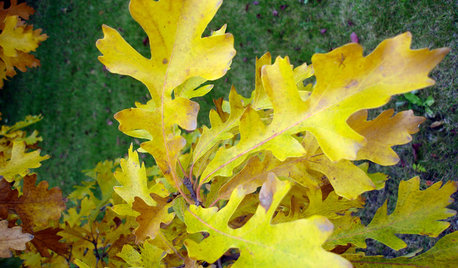Ladobe/Moth Experts
susanlynne48
13 years ago
Related Stories

HOUSEPLANTSOrchids 101: How to Keep Your Moth Orchids Alive and Blooming
Growing Phalaenopsis — and getting it to flower again — is easier than you might think
Full Story
WINTER GARDENINGPruning Secrets for Exquisite Roses
Encourage gorgeous blooms year after year with this time-tested advice on how to prune your rosebush in winter for health and shape
Full Story
ORGANIZINGProfessional Tips for Organizing Your Clothes Closet
As summer draws to a close, get expert advice on editing and organizing your wardrobe
Full Story
GARDENING GUIDESGreat Design Plant: Asclepias Incarnata for a Butterfly Garden
Beautiful swamp milkweed makes it easy to help monarchs and other pollinators in eastern U.S. gardens
Full Story
GARDENING FOR BUTTERFLIESGardening for the Bees, and Why It’s a Good Thing
When you discover how hard bees work for our food supply, you may never garden without them in mind again
Full Story
GARDENING GUIDESCelebrate Eastern Oaks for Wildlife, Longevity and Seasonal Interest
There might not be a more important tree to have in your eastern U.S. landscape — if you can fit one in
Full Story
GARDENING GUIDES9 Clay-Busting Native Flowers for Summer Sun
These plants survive and even thrive in tough clay soil east of the Rocky Mountains
Full Story
EDIBLE GARDENSWhy Grow Quince? For Beauty, Fragrance and Old-Time Flavor
Delightfully perfumed fruit and lovely spring blossoms make this apple and pear cousin worth a spot in the garden
Full Story
VINTAGE STYLECatch the Wave of Decorating With Vintage Swimsuits
Bathing suits have migrated from the beaches of yore to the walls of today, framed as art and artifacts
Full Story
KITCHEN STORAGEGet It Done: How to Clean Out the Pantry
Crumbs, dust bunnies and old cocoa, beware — your pantry time is up
Full Story





larry_gene
ladobe
Related Professionals
Londonderry Landscape Architects & Landscape Designers · Port Royal Landscape Architects & Landscape Designers · Brunswick Landscape Contractors · Lantana Landscape Contractors · Saint George Landscape Contractors · Santa Maria Landscape Contractors · St. Louis Landscape Contractors · Columbia Fence Contractors · Homestead Fence Contractors · Marana Fence Contractors · Mill Valley Fence Contractors · Provo Fence Contractors · Santa Clarita Fence Contractors · Shorewood Fence Contractors · Town 'n' Country Window Contractorssusanlynne48Original Author
ladobe
susanlynne48Original Author
larry_gene
susanlynne48Original Author